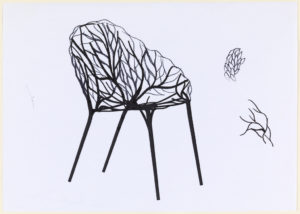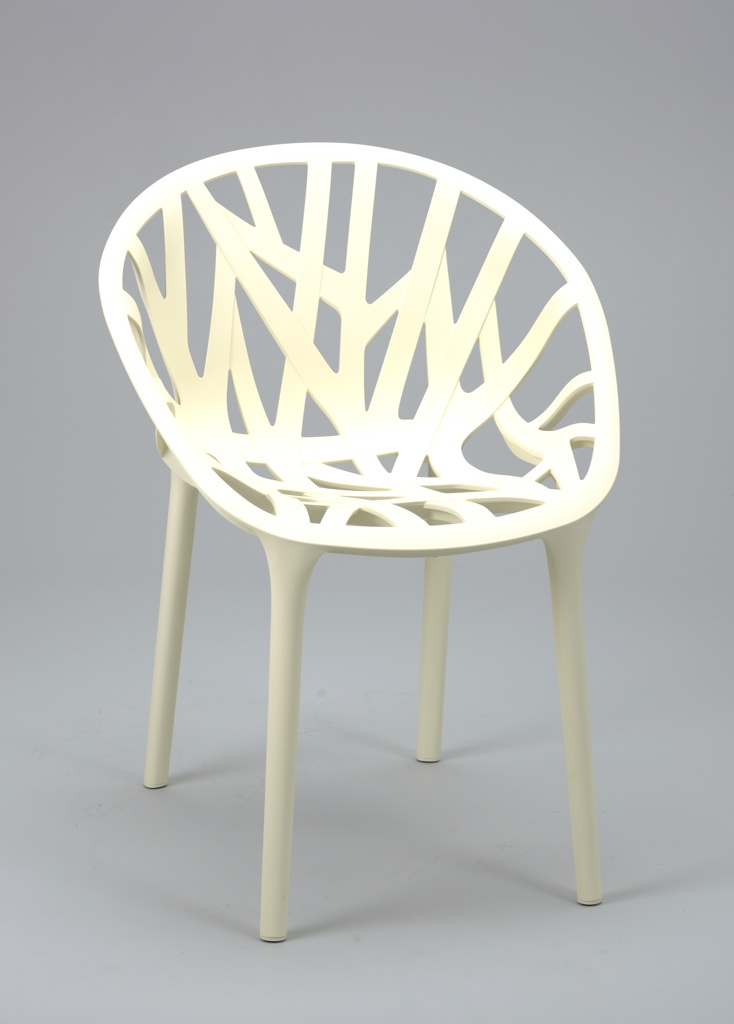In the mid-2000s, designers (and brothers) Ronan and Erwan Bouroullec, came up with the concept of a chair that would “sprout up like a plant…with its branches gently curving up to form the seat and back.” They also took inspiration from historical seating, such as English cast iron garden benches, American chairs in the rustic style, and the nineteenth-century horticultural technique of shaping young trees over a period of years into seat forms. The Bouroullec‘s preliminary three-dimensional prototype was asymmetrical and somewhat unstable. This led them to rethink the chair and focus on a symmetrical shape and the number of “branches” needed to evenly support a sitter. A design drawing in the museum’s collection offers some insight into the Bouroullec‘s creative process.

Drawing: Design for Vegetal Chair (France), 2005; Erwan and Ronan Bouroullec; Photocopy, black marking pen on white wove paper; Museum purchase from General Acquisitions Endowment Fund, 2011-30-1
Over the span of four years, after much trial and error, many design changes, and prototyping with the furniture manufacturer Vitra’s product development department, the designers and Vitra utilized the polymer polyamide and injection molding technology to mass-produce the chair. The form is composed of two sections: the curved seat shell and the erect stem-like front legs are cast as one part, the straight rear legs as the other. The whole form appears as an organic overlapping series of flattened twigs on branches, the overall shape and flat surface creating a comfortable, sturdy chair suitable for use indoors or out, that can be stacked for efficient storage.
This chair is currently on view in Wyss Institute Selects.
Cynthia Trope is the Associate Curator of Product Design and Decorative Arts at Cooper Hewitt, Smithsonian Design Museum.

One thought on “Vegetal Chair”
Maria Isabel Lascurain on March 3, 2022 at 10:23 am
O med Price vitralería vegetal chair